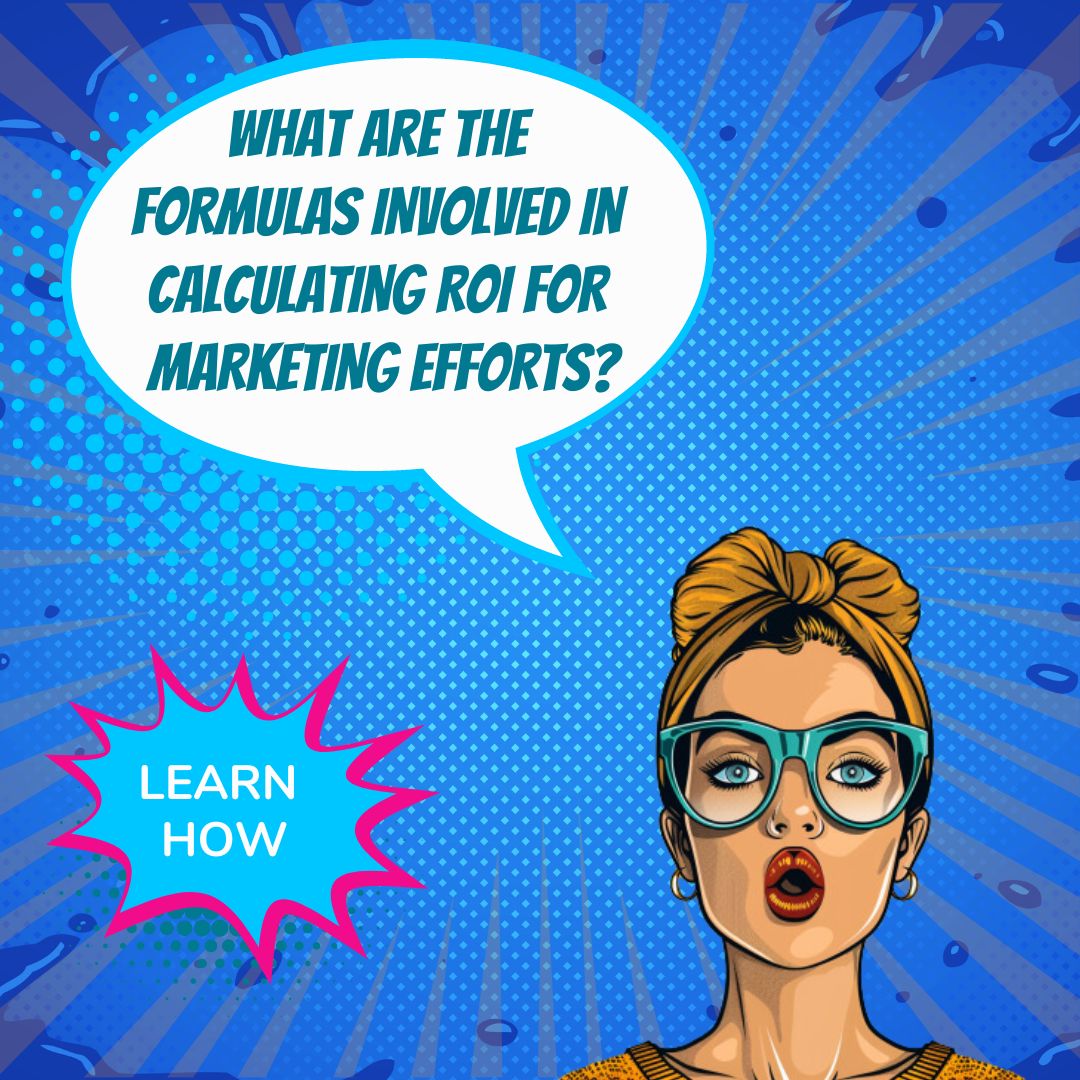Key Takeaways
✅ Accurate ROI Calculation Requires Comprehensive Cost Inclusion: Understanding that every penny counts is crucial for accurate ROI calculations. You need to factor in everything from ad spend and the salaries of team members to the less obvious overhead costs. Surprisingly, many companies overlook this, leading to misleading ROI figures. By ensuring comprehensive cost inclusion, you can get a real picture of your marketing campaign's financial impact, with studies showing that businesses that account for complete expenses in ROI calculations enjoy more accurate forecasting and budget allocation.
✅ ROI Measurement is Crucial for Informed Decision-Making: Calculating ROI isn't just about numbers—it's about making smarter decisions. By regularly monitoring ROI, you're equipped with clear evidence of what's working and what's not. This data-driven approach leads to better strategic adjustments and resource allocation. Numbers don't lie: businesses utilizing ROI as a key metric for decision-making report up to 35% more efficiency in their marketing spend.
✅ Aligning KPIs with Business Objectives is Vital: Your ROI is only as good as the KPIs you track. Select metrics that not only mirror your campaign goals but also align with your overall business objectives. Whether it's enhancing brand awareness or driving sales, choosing the right KPIs ensures that your marketing efforts contribute to your business's success. Firms that align their KPIs with business objectives tend to see a 60-70% improvement in achieving their strategic goals.
Introduction
Is your marketing budget working hard enough? Unlocking the full potential of your marketing spend through master exhibitions in ROI calculation is not just a skill—it's an essential ingredient for success in today's data-driven marketplace. Understanding the basics of marketing ROI and the importance of making informed decisions based on accurate data can significantly impact your business.
This engaging journey into Mastering ROI Calculation: Essential Tips for Markitors will not only illuminate the path to understanding and improving your marketing ROI but also dive into the latest trends and solutions that modern marketers are using to maximize their revenue, ROAS (Return on Ad Spend), and overall ROI. We'll explore how integrating systems and tools, coupled with a deep understanding of your business model and sales cycle, can transform your approach to calculating ROI.
Be prepared to uncover actionable insights and groundbreaking information that will elevate your marketing strategies. This article promises to be a treasure trove of knowledge, giving you the tools to make smarter decisions and significantly increase the effectiveness of your marketing efforts.
Top Statistics
| Statistic | Insight |
|---|---|
| Marketing ROI: Implementing personalized marketing strategies can enhance marketing ROI by 10 to 30 percent. | Personalization in marketing not only attracts more customers but also significantly boosts the return on your marketing investments. |
| Trade Spend ROI: The average trade promotion ROI tends to be higher for independent and small chain retailers compared to large chain retailers. | This highlights the advantage smaller retailers have in flexibly managing promotions, showing the effect of hands-on approaches to marketing. |
| Continuous A/B testing: Helps refine marketing initiatives and improve ROI. | A testament to the fact that consistent optimization and testing can lead to better marketing performance and return on investment. |
Understanding Marketing ROI Basics
At the heart of marketing effectiveness lies a simple yet powerful concept: Marketing ROI (Return on Investment). This metric shines a light on the profitability of your marketing efforts by comparing the costs against the profits they bring in. Imagine you're weighing your marketing expenses on one side of a scale and your sales on the other. Your goal is to see which way the scale tips. You calculate Marketing ROI by first subtracting the marketing costs from the sales generated, then dividing this number by the marketing costs themselves. The result, expressed as a percentage or ratio, tells you how much bang you're getting for your buck. But why does this matter? Well, without this insight, you're essentially flying blind, pouring money into campaigns without knowing their true impact. Could you be getting more sales with less spend? Calculating your Marketing ROI is the first step in finding out.
The Power of Clear Marketing Objectives
Diving into marketing without clear goals is like setting sail without a compass. Clear marketing objectives are your North Star, guiding every decision and strategy. They transform vague intentions into measurable targets, such as increasing website traffic, breaking into new markets, enhancing brand reputation, or maximizing the value you get from customers over time. These objectives not only direct your marketing efforts but also provide a yardstick to measure success. But how do you know if your objectives are hitting the mark? It comes down to specificity and measurability. For instance, aiming for a 20% increase in website traffic within three months is far more actionable and trackable than simply wanting 'more visitors'.
Embracing Systems and Tools
In our digital age, manual tracking of marketing expenses versus sales is near impossible without the help of sophisticated systems and tools. Modern accounting systems and CRM platforms seamlessly gather and analyze data from various marketing channels, turning raw numbers into insightful ROI calculations. Google Analytics and Quick Libs shine by offering deep dives into customer behavior and conversion rates. They turn the arduous task of tracking every dollar spent and earned into a more manageable, even enjoyable task. Think of these tools as your trusty sidekicks in the quest to prove the value of every marketing dollar spent.
Granular ROI Calculation: The Key to Efficiency
Drilling down into the specifics, calculating the Customer Acquisition Cost (CAC) for each marketing channel unveils the effectiveness of your efforts in stark relief. This granular approach involves dividing the total marketing costs by the number of new customers acquired, offering a clear picture of where your marketing dollars are working hardest. Are you spending hundreds on social media ads but seeing most of your new customers coming from email marketing? These insights allow you to allocate your budget more effectively, ensuring that every dollar spent is a dollar well-spent.
Tailoring ROI to Your Sales Cycle and Business Model
Every business has its unique rhythm and tempo. A one-size-fits-all approach to calculating ROI invariably falls short. The length of your sales cycle and the nature of your business model (Are you a SaaS company cherishing recurring income, or an e-commerce platform counting on immediate sales?) fundamentally shape how you should approach ROI. Customizing your ROI calculation method to fit your business's heartbeat is not just beneficial—it's essential. For SaaS companies, the value of a customer is not just in the first sale but in the ongoing relationship. E-commerce firms, on the other hand, might focus more on the immediate returns. Recognizing and adapting your strategies according to these nuances maximizes the relevance and accuracy of your ROI calculations.
Interpreting and Maximizing Marketing ROI
Knowing your Marketing ROI is one thing; understanding what it tells you about your campaign's performance is another. A positive ROI signals that your marketing efforts are paying off, literally. It means you're doing something right: your strategies are effective, and you're bringing in more money than you're spending. On the flip side, a negative ROI is a clear indicator that it's time to reassess your approach. To maximize ROI, lean into marketing analytics tools for deeper insights, prioritize your strategies based on what's working, and be prepared to shift gears or reallocate budgets as needed. Remember, every marketing journey is a continual process of testing, learning, and refining.
AI Marketing Engineers Recommendation
Recommendation 1: Integrate Multi-channel Attribution in ROI Analysis: With consumers interacting with brands through multiple touchpoints, a simple return on investment calculation is no longer sufficient. According to a Google Analytics survey, marketers who use multi-channel attribution are 1.5 times more likely to see an increase in marketing ROI. By integrating a multi-channel attribution model into your ROI calculation, you can understand the contribution of each touchpoint to the final conversion. This holistic view allows for more strategic investment across channels and ensures your marketing budget is allocated to the most effective channels.
Recommendation 2: Leverage Predictive Analytics for Forward-Looking ROI: Staying ahead in today’s fast-paced market requires not only understanding past performance but also predicting future trends. According to a recent survey by Forrester, companies that adopt predictive analytics for their marketing strategies are more likely to outperform competitors and increase profitability. By incorporating predictive analytics into your ROI calculations, you can forecast future marketing returns based on historical data, current market trends, and consumer behavior patterns. This forward-looking approach enables more informed decision-making and strategic planning, optimizing your marketing investments for future success.
Recommendation 3: Implement Marketing Automation Tools for Real-time ROI Tracking: Tracking and calculating ROI in real-time can significantly enhance your marketing strategy's responsiveness and agility. A report from Salesforce indicates that 67% of marketing leaders use marketing automation tools. These tools not only streamline the marketing process but also provide immediate insights into campaign performance and ROI. By implementing a marketing automation platform that features real-time ROI tracking, marketers can quickly adjust campaigns for better performance, ensuring resources are focused on the most profitable initiatives. This approach not only saves time but also maximizes the efficiency of your marketing spend.
Conclusion
Mastering ROI calculation is not just about crunching numbers—it's a fundamental step for marketers to understand how their efforts translate into real business value. From getting the basics of marketing ROI under your belt to setting clear marketing objectives, each step is a building block towards making informed, strategic decisions that drive profitability. Using the right systems and tools not only simplifies this process but also unveils insights that might otherwise remain hidden in heaps of data.
Calculating ROI on a granular level allows marketers to pinpoint exactly where their investments are paying off and where they're not, guiding them on where to double down or cut back. Recognizing the nuances of your sales cycle and business model plays a crucial role in accurately assessing and maximizing returns. Remember, not all returns are instant, especially in sectors like SaaS, where the focus is on customer lifetime value rather than immediate sales.
Interpreting and maximizing ROI isn't just about celebrating successes; it's also about learning from less profitable or failed campaigns. By continuously refining your approach based on ROI insights, you'll not only boost profitability but also contribute to a culture of accountability and data-driven decision-making within your team.
In closing, mastering the art of ROI calculation is an essential skill for any marketer seeking to validate and enhance the impact of their strategies. By embracing these principles and constantly seeking to understand the story behind the numbers, you position yourself and your business for sustainable growth and success. Let's not just aim for good returns; let's strive for exceptional returns by making every marketing dollar count.
FAQs
Question 1: What is Marketing ROI?
Answer: Marketing ROI (Return on Investment) measures the profit earned from every dollar a business spends on marketing efforts. It helps quantify and justify how marketing programs and campaigns generate revenue for the business.
Question 2: How do I calculate Marketing ROI?
Answer: To calculate marketing ROI, subtract the marketing cost from the sales revenue and divide the result by the marketing cost. This gives a ratio or percentage indicating the return on marketing investment.
Question 3: Why is Marketing ROI important?
Answer: Marketing ROI is crucial for businesses as it enables them to assess the profitability of their marketing campaigns and make informed decisions, guiding effective allocation of their marketing budget.
Question 4: How do I consider the sales cycle in ROI calculation?
Answer: Different products or services have different sales cycles, which significantly influence how you calculate your marketing ROI. For short sales cycles, the return on marketing investments might be quick and relatively easy to measure. Longer sales cycles require year-long data for accurate ROI, smoothing out fluctuations and providing reliable averages.
Question 5: How do I adapt ROI calculation for different business models?
Answer: The methodology for calculating marketing ROI must be adapted to fit the unique dynamics of your business model. For example, SaaS companies value customer lifetime and recurring income, while e-commerce firms focus on immediate sales and service businesses on growing lasting client connections and referrals.
Question 6: What is Customer Acquisition Cost (CAC) and how do I calculate it?
Answer: CAC is the cost associated with acquiring new customers. To calculate CAC, divide the total costs associated with acquiring new customers by the number of new customers acquired. This helps identify where marketing expenses are yielding high returns and where they are not.
Question 7: What tools should I use to track marketing performance and calculate ROI?
Answer: Utilize tools like Google Analytics for tracking website and campaign performance, and platforms like QuickBooks for budgeting and tracking expenses and revenues. These tools simplify the calculation of marketing ROI and provide insights to drive marketing decisions effectively.
Question 8: How do I ensure accurate ROI measurement?
Answer: Ensure accurate ROI measurement by leveraging marketing analytics tools that can unify disparate attributions alongside online and offline measurements. This provides clearer insights for more efficient and accurate ROI measurement.
Question 9: What are some examples of marketing ROI in action?
Answer: Examples include email marketing ROI, where a company measures the profit from email campaigns, and written content ROI, where a law firm measures the return from blog posts. These examples demonstrate how different marketing channels can be evaluated for their effectiveness.
Question 10: How do I improve my marketing ROI over time?
Answer: Improve marketing ROI by regularly calculating and analyzing the return on investment for every campaign. This helps identify what’s working and what’s not, enabling data-driven marketing plans that optimize marketing efforts and budget allocation.
Academic References
- Mastering ROI Calculation: Essential Tips for Marketers. This article emphasizes the importance of understanding and effectively tracking marketing campaigns to accurately gauge their effectiveness and calculate Return on Investment (ROI). It highlights the use of web analytics tools and clear marketing objectives to guide budget allocation and campaign adjustments.
- How to Calculate Marketing ROI: A Guide for Founders. This guide provides a comprehensive overview of calculating marketing ROI, including the key role of systems and tools, the impact of the sales cycle, and considerations for different business models. It emphasizes the need to adapt ROI calculation methods to fit unique business dynamics.
- Marketing ROI: What It Is, How to Calculate and Maximize It. This article explains the concept of marketing ROI, how to calculate it, and how to maximize it. It provides examples of ROI calculations for different marketing channels and emphasizes the importance of leveraging marketing analytics tools and strategies.
- Digital Marketing ROI: Metrics & Tips to Increase It. This article discusses digital marketing ROI, including metrics and tips to increase it. It covers various aspects of digital marketing, such as customer segmentation, channel marketing, and inbound vs. outbound marketing.
- Mastering ROI: How to Track Marketing Campaigns Effectively. This article focuses on the importance of tracking marketing campaigns to measure their effectiveness and calculate ROI. It highlights the use of web analytics tools and clear marketing objectives to guide budget allocation and campaign adjustments.






